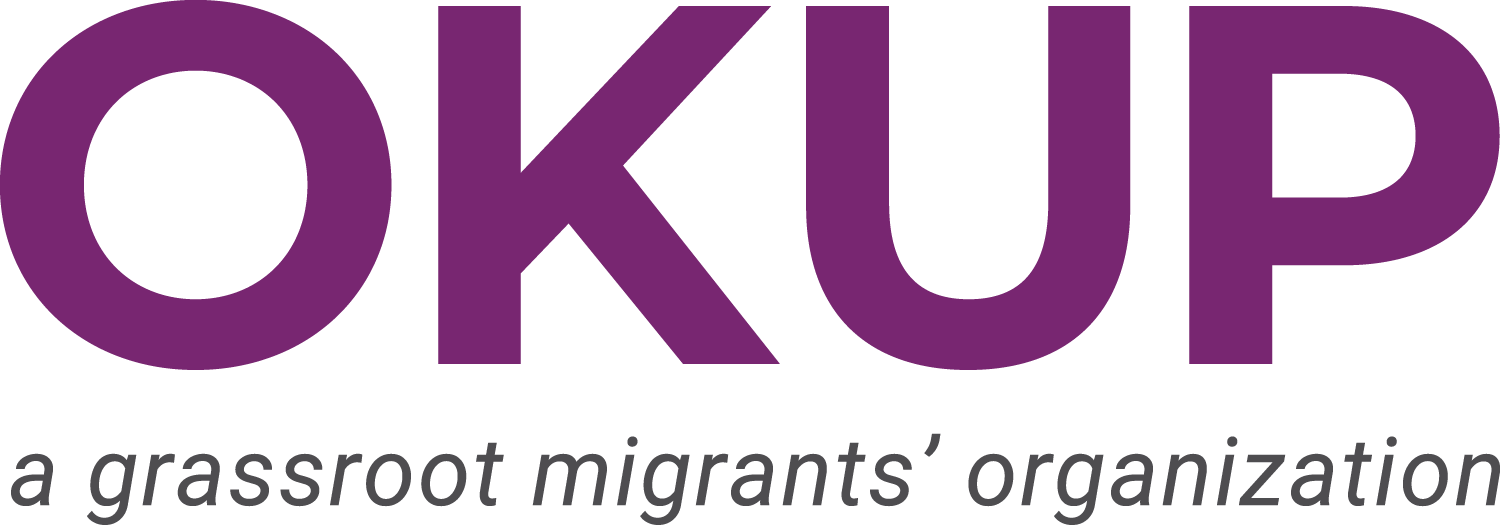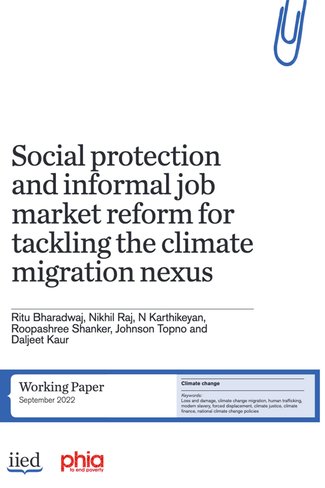Social Protection and Informal Job Market Reform for Tackling the Climate Migration Nexus (Jharkhand, India)
2022
- Author
- Bharadwaj R, Raj N, Karthikeyan N, Shanker R, Topno J and Kaur D (IIED)
- World region
- South Asia
- Origin of migration
- Jharkhand region, Palamu district in India
- Area of transit
- No data available
- Destination of migration
- No data available
- Who is affected
- No data available
- Type of climatic event
-
Slow-onset event
Droughts and frost.
- Type of migration/mobility
-
No data available
People are over 170% more likely to migrate, if they have experienced loss and damage due to climate events. Access to social protection reduces the likelihood of migration by almost 60%. Reduced access to food increases the likelihood of migration in the slow-onset context by 71%. Reduced income increases the likelihood of migration by 70%. Marginalisation also was found to increase the likelihood of migration. Most people who migrate are male (up to almost 60 years of age) and they migrate to find work. Migration is largely undocumented.
- Destination industry or sector
-
Domestic work, Fishing
- Type of modern slavery
-
Child slavery, Debt bondage, Forced labour, Human trafficking
Migrants in the slow-onset context are more vulnerable to human trafficking than migrants in the rapid-onset context. This may be because areas affected by slow-onset events do not receive the same level of support and relief as those affected by rapid-onset events.
- Link between climate change, migration and modern slavery
- Direct, Indirect
- Key vulnerability factors
-
People are more likely to migrate and become vulnerable to forced labour and human trafficking before they migrate due to: a fall in or loss of income, food insecurity, loss and damage due to climate change, such as soil erosion and land degradation, lack of access to social protection, as well as marginalisation, unemployment and debt. Undocumented migration and the non-portability of social protection increases migrants vulnerability to human trafficking and forced labour while in transit. Once they reach their destination, migrants are at higher risk of human trafficking and forced labour due to informal employment, exclusion from social protection and a lack of social support networks.
- Summary
-
This paper focuses on two Indian regions, one affected by slow-onset events and one by rapid-onset events, where different factors influence households' decision to migrate and their needs throughout their migration journey. Distress migration increases vulnerability to human trafficking and forced labour. Migrants from the slow-onset context were more vulnerable to human trafficking compared to those from the rapid-onset context. This may be because areas affected by slow-onset events do not receive the same level of support and relief as those affected by rapid-onset events.
- Recommendations
-
Recommendations to policymakers differ depending on the stage of migration: before departure, in transit and at destination. Overall, stronger social protection mechanisms and labour market regulation are advocated to reduce the informality of migration.



